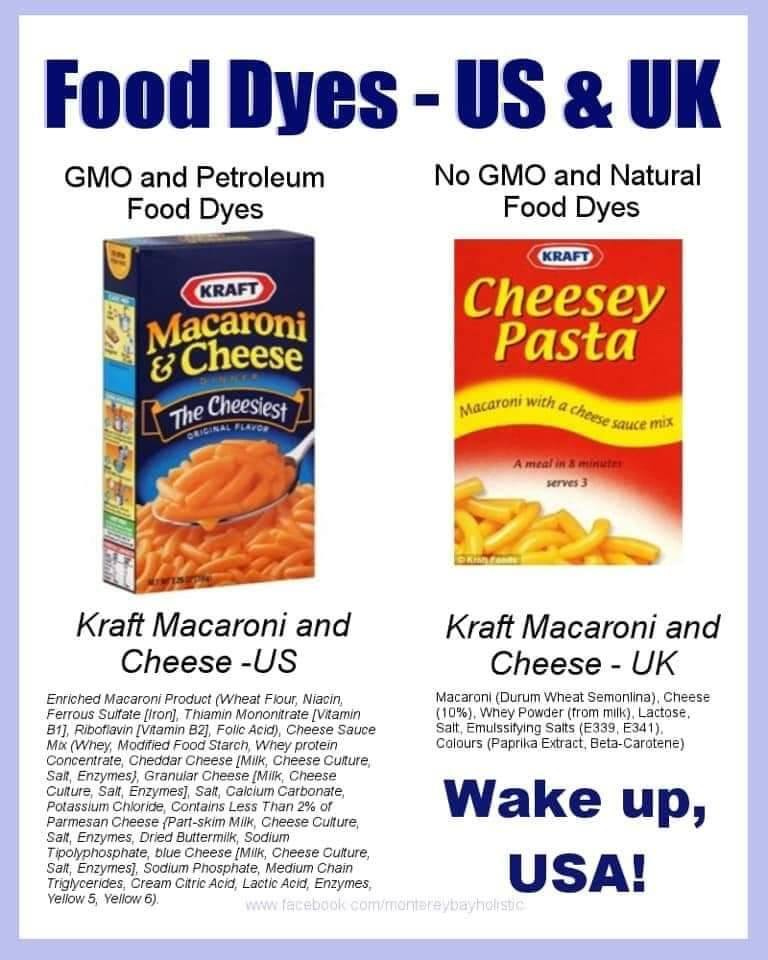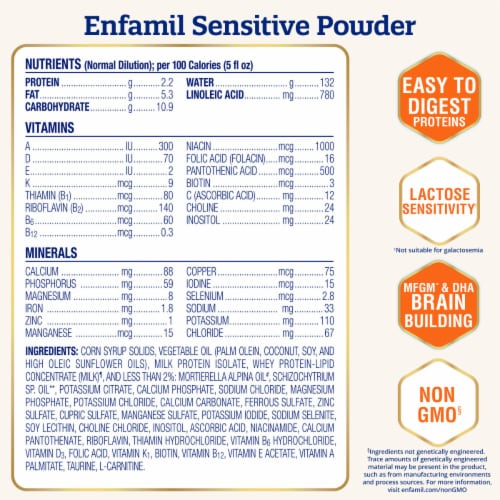Food has always been our medicine and should continue to be our first go-to when healing is needed. In this article I’ll start by outlining the problems with our current food supply and diet, and then teach you exactly how to eat to THRIVE in your health. You’ll gain insights to the best foods to consume, even sample shopping lists, meal plans, and more.
So WHY are so many having problems with foods? Digestive upset, food allergies and sensitivities are skyrocketing when just a few decades ago these were RARE. What’s really going on? A few things:
QUALITY
It’s no question that the quality of the food we are consuming has gone down. We’re genetically modifying our crops and spraying them with cancer causing chemicals. And the even more serious problem is our soil health. The root of this lies in our current agricultural practices which are in fact destroying and depleting our soil of the life sustaining nutrients we need. For example, research in the January 2022 issue of the journal Foods found noteworthy drops in nutrients levels from 30-50% in many vegetables between 1980-2010. Read the full national geographic article, here.
Toxic chemicals in our food supply tax our bodies’ systems especially our detox pathways, gut health, and hormonal health. Glyphosate, the USA’s main pesticide, has known cancer causing effects - yet is still used widely. In the US, we have very loose regulations regarding ingredient safety. A simple box of macaroni and cheese made by kraft, has completely different ingredients than the European version due to much stricter european standards. See for yourself!
Don’t even get me started on baby formula. Most traditional formulas in the US have inflammatory seed oils/corn syrup in the TOP THREE ingredients. OMG. Here’s a lovely label from Enfamil sensitive - so this is what we’re suggesting to feed a baby with a ‘sensitive’ gut aka major leaky gut/inflammatory conditions. I cannot roll my eyes back enough. Poison.
*a few formulas I support: Sammy’s Milk (cleanest I’ve EVER seen), Holle goat, Mt. Capra.
PROCESSED FOODS + DISCONNECTION
Gaining popularity after the second world war, we started to value convenience over quality. However, convenience comes with a price, a chemical one. As a product of that, we’ve become very disconnected from where our food is sourced. Now, we can buy all the food we need on the shelf, and it won’t spoil instead of going to the local market and buying fresh whole foods from the area. We’ve outsourced our food - many times even out of the country - to save money and time - at the cost of our health.
MICROBIOME DISRUPTION
All of the nutrient depletion and toxic overload takes a huge toll on the microbiome. Having a diverse microbiome is critical to human health - and from the beginning it’s getting destroyed. With over prescriptions of antibiotics running rampant, especially among children, the diversity of their microbiome is getting completely ruined, setting them up for digestive upset and allergies for life.
So - what can you do?
I get it, this can feel completely overwhelming and helpless. However - there’s a ton we CAN control. First and foremost, get into the habit of reading labels. Ideally, on a packaged food, every ingredient is an actual food item you recognize, not a chemical sounding name or number ie: red dye 40. Even better - try to opt for foods that don’t come with an ingredient list at all!
I’ll start with the foods I recommend everyone in general avoid, and then we’ll get a bit more specific.
Foods to avoid:
Processed sugar. This guy is a no brainer. Sugar is highly inflammatory, more addictive than cocaine, and toxic to the brain. If you want to sweeten things, opt for whole food based sweeteners like local honey, pure maple syrup, dates, and coconut sugar.
Wheat (gluten). Quality is a huge issue here. Our wheat (in the US) is highly toxic and genetically modified. It has virtually no nutritional value and is incredibly inflammatory. If you need an extra nudge to remove gluten from your diet, just read the book Grain Brain by Dr. Perlmutter. It’s important to remember with wheat - the inflammatory markers from 1 serving of gluten stays in the bloodstream for up to 12 weeks. Make sure to remove gluten for a minimum of 3 months before re-introducing. If you have an autoimmune condition - especially hashimotos - you should absolutely eat a gluten free (and corn free) diet. Gluten cross reacts with the thyroid and can spike a thyroid antibody response, pushing people further into an autoimmune state.
Corn. Corn is a grain - not a vegetable. It’s used in farm animals to fatten them up as quickly as possible. It’s very hard on the digestive system. It has similar properties to gluten sparking inflammation, contains phytates that block multiple nutrients from getting absorbed, has high lectin content which causes a slew of inflammatory reactions in the body, and is commonly sprayed with the most toxic pesticides. Corn can also commonly cross react with the thyroid creating an autoimmune inflammatory response due to a process called ‘molecular mimicry’. Meaning the molecular structure of corn and gluten are so similar that they can create the same response in the body.
Dairy. A common theme with inflammatory foods is their quality. While our ancestors certainly thrived on animal dairy products like: raw milk, butter, lard, etc. in modern day, so many of us struggle to process dairy well. In my belief this is largely due to: us having poor digestive function and microbiome balance, pumping animals full of antibiotics/hormones, and the pasteurization process which removes all the enzymes from the diary making it nearly impossible to process. Raw dairy can be seen as a superfood (if you can access it), it’s usually much easier for people to process. Conventional dairy, stay away.
Soy. Soy has gained popularity due to its vegetarian protein content. However, it’s highly processed (tofu or soy milk) and estrogenic in nature. It’s made of isoflavones which can mimic estrogen, thus bind to estrogen receptors in the body wrecking havoc on hormone levels. In a world where people tend to be estrogen dominant, I suggest avoiding soy as a protein or milk replacement.
If you’ve removed the 5 food groups above for 3+ months and still symptomatic, I recommend removing the following food groups:
Nightshade vegetables. This family of plants can cause chronic inflammation and gut distress for many. Nightshades include tomatoes, eggplant, potatoes, and peppers.Why are people sensitive to nightshades? Glycoalkaloids. It’s a natural pesticide produced by these plants to fight off pathogens. If you’ve got chronic inflammation, pain, headaches, or autoimmune conditions I highly recommend removing nightshades.
Legumes. A plant family including beans, peas, and lentils. While healthy for many, these foods can cause a LOT of digestive distress and inflammation. Don’t forget - peanuts are actually a legume, not a nut!
Grains. For many, all types of grains, not just gluten and corn are inflammatory. Not to mention they wreck havoc on blood sugar levels (a topic for another month!). If you have any type of autoimmune or chronic inflammatory condition I highly recommend going completely grain free. Additional grains include: rice, oats, barley, buckwheat, millet, spelt, etc.
What to eat?
Whole foods, that’s what! My personal belief is that eating a paleo like diet works great for 80+% of people. This includes focusing on the following main food groups:
Animal protein. Wild caught fish/seafood, grass fed beef/bison, organic pasture raised meats like chicken, turkey, duck, pork. Eggs. Highest quality available of course. I recommend consuming a minimum of 80% of your body weight in grams of protein per day.
Vegetables. If not sensitive to them, of course. Cooked vegetables are much easier for the body to digest, however you do lose the enzyme content with the cooking process. Organic only. If you are consuming cooked vegetables, I recommend taking a good digestive enzyme with your meals. My favorite enzyme is Gastrodigest 2 by Vervita, which you can purchase, here.
Fruits. I don’t advise patients to eat a ton of fruit, as it is higher in sugars. If you’re trying to stabilize blood sugar focus on low glycemic fruits like berries. However, ONLY consume organic berries whenever possible as they are not protected by a rhind or peel from pesticides and chemicals. If blood sugar isn’t as much as a concern I love the nutrient value of fruits like avocado, apple, banana, peach, and papaya. Yes - avocado is technically a fruit!
Healthy fats. Eating healthy fats does not equal fat accumulating on your body. Healthy fats such as: grassfed butter, tallow, olive oil, avocado (fat content), and MCT oil, as well as fats from nuts and seeds are critical to our health, especially brain health.
Let’s get practical for a minute. Below I’ll share our actual real shopping list from the week and a sample meal plan! I’ll get sick of typing organic just know we only purchase organic/grass fed products:
Our shopping list this week:
pasture raised eggs
strawberries
banana
nitrate free bacon
magic spoon cereal (I do have a 4 year old, after all)
nitrate free turkey lunch meat
caselvetrano olives
raw goat cheddar cheese
almond milk
coconut milk
paleo valley beef sticks
nut pod coffee creamer
organic coffee
ground beef
pasture raised chicken
lamb shanks
broccolini
asparagus
garlic
onions
japanese sweet potato
skout bars for the kiddo
boulder brand potato chips
Hu dark chocolate bar
Sample meal plan - 3 days
What about snacks? View my favorite brands below.
Paleo valley - beef and turkey sticks, protein bars, shakes (15% off with link)
Fresh fruits and veggies
What about picky eaters?
This isn’t easy with kids, but as parents, we have to break the habits of sugar filled and chemical laden junk foods. If you have a baby - start now! By starting kids on whole food nutrient based diets, they tend to have a much better developed palate, and prefer healthy foods over junk. I highly recommend the practice of baby led weaning to parents - meaning you feed babies what you eat from the start. No baby food! I may do a bonus article about this at some point, as I’m very passionate about that topic for babies.
For older kids, it comes down to being the authority. Control what you can in your own home. Have the healthier snacks/treats available and don’t allow the junk at home. As parents we need to be in charge and educate our kids about the importance of fueling our body with health promoting foods, not health degrading choices. At the end of the day, children will not starve themselves, however you may be in for a rough couple weeks!
I hope this article helps you feel empowered to make positive food choices for yourself and your loved ones! Have additional questions? Let’s continue the conversation in the comments!
Xo.
Additional resources:







